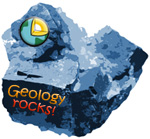'BOW OF DESTINY' EarthCache
-
Difficulty:
-

-
Terrain:
-

Size:  (other)
(other)
Please note Use of geocaching.com services is subject to the terms and conditions
in our disclaimer.
Tresillian Bay, is a small cove in SE Wales, west of Llantwit Major. It lies along a stretch of coast and cliff path under protection by the Glamorgan Heritage Coast, characterised by limestone cliffs with caves and bays

Tresilian Bay takes its name from Prince Silian who is reputed to have kept court there in the 3rd and 4th centuries. The bay once had an inn which was allegedly frequented by smugglers and pirates.
Getting there
Access is possible from the east or west along the All Wales Coastal Path. However the best option is from the beach car park. However, if there is a temporary closure of the footpath, you can go down through the fields on a well marked footpath off Dimlands Road, but parking is limited. Please note that there is no way through on the private drive to Tresillian House
About the rocks
The geology is controlled largely by its major asymmetrical synclinal or bowl-like structure. The rocks dip more gently on the northern side of the syncline than on the southern side.
The carboniferous rocks form a continuous succession from basal limestones to Upper Coal Measures The Carboniferous period is represented by extensive outcrops across South Wales from the Wye Valley in the east, through the South Wales Coalfield, the Vale of Glamorgan and Gower westwards to southern Pembrokeshire.
The Heritage Coast of the Vale of Glamorgan stretches between the estuary of the River Ogmore and the storm beach at Gilestone it comprises some twenty kilometres of spectacular Blue Lias Limestone cliffs punctuated by sandy bays and coves littered with pebbles of all sizes hewn by the sea over millennia.
The coastline reveals a fascinating geological succession and illustrates a period when the coastline and environment were completely different to what they are today .
This story begins some 350 million years ago in a land where corals and creatures with shells lived in warm, shallow tropical seas. It was the remains of these creatures that formed the vast beds of Carboniferous Limestone of South Wales. This environment gave way to swamps and estuaries where immense ferns and mosses grew unchecked. These huge plants eventually fell and were compacted layer upon layer resulting in the beds of the Coal Measures and Millstone Grits, which together with the Carboniferous Limestone are the main deposits of the Carboniferous Period.
Reptiles such as 'Ichthyosaurus communis', a marine predator, swam in a tropical sea as ‘South Wales’ at that time was very much closer to the equator than it is now and the Atlantic Ocean was yet to be born. Ia addition the coast exhibits some of the ancient earth movements and more latterly the scars of the Ice Age. These shaped the land we now live in leaving us with, in the case of the Heritage Coast, hanging valleys and streams occupying valleys that are far too large for their present capacity.
The carboniferous limestone can be divided into the southern outcrop which broadly parallels the county boundary with South Glamorgan, and the northern outcrop which is located just within the Brecon Beacons. The limestone beds form a margin around the coalfield and outcrop extensively in South Wales from Dyfed to Gwent.
The carboniferous limestone series includes two main varieties of carbonate rocks - normal limestone and dolomite. Normal limestone is a hard, crystalline, sedimentary rock composed of calcium carbonate with varying amounts of impurities, whereas dolomite is composed principally of the double carbonate of calcium and magnesium.
The cliffs along the entire coast show well defined strata of Lias Limestone and shale’s lower down. This has lead of the creation of a number of caves.
The cave in Tresillian has an slightly arched roof at the back of the cave, known as the "Bow of Destiny" which is purportedly visited by betrothed couples. The man would throw a pebble into the arch. The number of attempts made would be the number of years they should wait to marry.

The cave at the given coordinates is a sea cave, also known as a littoral cave, is a type of cave formed primarily by the wave action of the sea. The primary process involved is erosion.
Littoral caves may be found in a wide variety of host rocks, ranging from sedimentary to metamorphic to igneous, but caves in the latter tend to be larger due to the greater strength of the host rock. The rocks here are sedimentary.
In order to form a sea cave, the host rock must first contain a weak zone. In sedimentary rocks, this may be a bedding-plane parting or a contact between layers of different hardness.
The driving force in littoral cave development is wave action. Erosion is ongoing anywhere that waves batter rocky coasts, but where sea cliffs contain zones of weakness, rock is removed at a greater rate along these zones. As the sea reaches into the fissures thus formed, they begin to widen and deepen due to the tremendous force exerted within a confined space, not only by direct action of the surf and any rock particles that it bears, but also by compression of air within.
Most sea-cave walls are irregular and chunky, reflecting an erosional process where the rock is fractured piece by piece. However, some caves have portions where the walls are rounded and smoothed, typically floored with cobbles, and result from the swirling motion of these cobbles in the surf zone.
By far the majority of sea caves consist of a single passage or chamber. Those formed on faults tend to have canyon-like or angled passages that are very straight. Caves formed along horizontal bedding planes tend to be wider with lower ceiling heights.
Go to the coordinates given. Check for a low tide. The rocks can be slippery when wet or seaweed covered. Some of the boulders on the beach are loose and unstable. Be careful when you walk on the beach and on the cliff top. Stay away from the base of the cliffs and from the edges of the cliffs as they are loose and overhanging in places.
IF YOU DO NOT SUBMIT A RESPONSE TO THE LOGGING REQUIREMENTS YOUR LOG MAY BE DELETED WITHOUT NOTICE.
Please DO MESSAGE or EMAIL the answers ~ From the guidelines: You do not need to wait for permission to log. Requiring someone to wait is not supported by the EarthCache guidelines. You should send your logging task answers , then log the EarthCache. When I review your logging task answers, if there is a problem, I will contact you to resolve it. If there is no problem, then your log simply stands."
How big is the cave in front of you? (In metres)
Notice the beds of rock they are not quite horizontal. By how much do they dip approximately in degrees?
Look for the high tide mark – dark staining on the rock with a dense barnacle population. How high is it off the cave floor?
Click here to go to useful tide table. What date and time did you visit?
Look at the ceiling of the cave. Where are there similar rocks? What does this suggest to you about the development of the cave?
Please do not include answers in your log


Additional Hints
(Decrypt)
SBE LBHE FNSRGL purpx gung lbhe ivfvg pbvapvqrf jvgu ybj gvqr